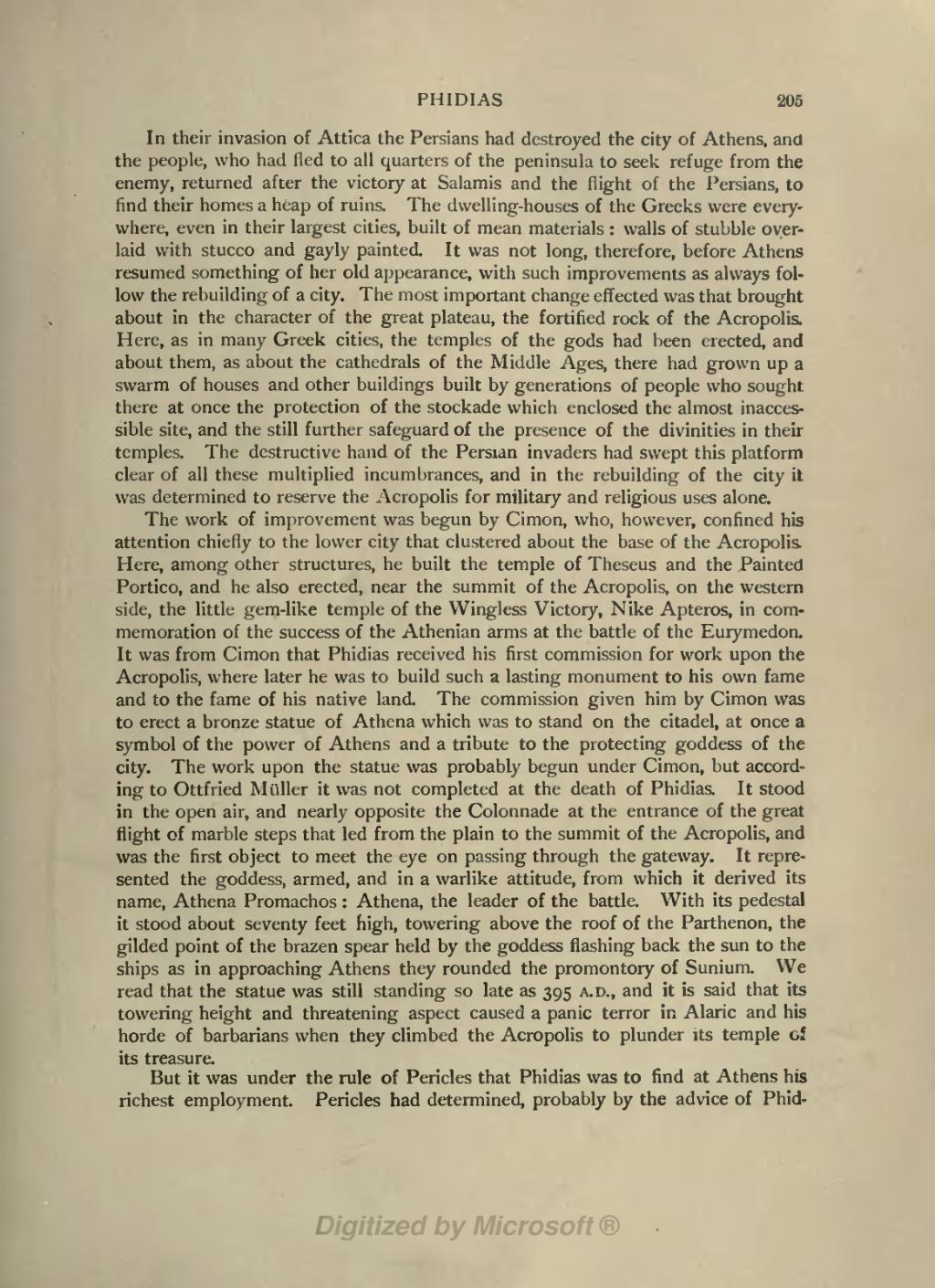PHIDIAS 205 In their invasion of Attica the Persians had destroyed the city of Athens, and the people, who had fled to all quarters of the peninsula to seek refuge from the enemy, returned after the victory at Salamis and the flight of the Persians, to find their homes a heap of ruins. The dwelling-houses of the Greeks were every where, even in their largest cities, built of mean materials : walls of stubble over laid with stucco and gayly painted. It was not long, therefore, before Athens resumed something of her old appearance, with such improvements as always fol low the rebuilding of a city. The most important change effected was that brought about in the character of the great plateau, the fortified rock of the Acropolis. Here, as in many Greek cities, the temples of the gods had been erected, and about them, as about the cathedrals of the Middle Ages, there had grown up a swarm of houses and other buildings built by generations of people who sought there at once the protection of the stockade which enclosed the almost inaccessible site, and the still further safeguard of the presence of the divinities in their temples. The destructive hand of the Persian invaders had swept this platform clear of all these multiplied incumbrances, and in the rebuilding of the city it was determined to reserve the Acropolis for military and religious uses alone.
The work of improvement was begun by Cimon, who, however, confined his
attention chiefly to the lower city that clustered about the base of the Acropolis
Here, among other structures, he built the temple of Theseus and the Painted
Portico, and he also erected, near the summit of the Acropolis, on the western
side, the little gem-like temple of the Wingless Victory, Nike Apteros, in commemoration of the success of the Athenian arms at the battle of the Eurymedon.
It was from Cimon that Phidias received his first commission for work upon the
Acropolis, where later he was to build such a lasting monument to his own fame
and to the fame of his native land. The commission given him by Cimon was
to erect a bronze statue of Athena which was to stand on the citadel, at once a
symbol of the power of Athens and a tribute to the protecting goddess of the
city. The work upon the statue was probably begun under Cimon, but accord
ing to Ottfried Müller it was not completed at the death of Phidias. It stood
in the open air, and nearly opposite the Colonnade at the entrance of the great
flight of marble steps that led from the plain to the summit of the Acropolis, and
was the first object to meet the eye on passing through the gateway. It represented the goddess, armed, and in a warlike attitude, from which it derived its
name, Athena Promachos : Athena, the leader of the battle. With its pedestal
it stood about seventy feet high, towering above the roof of the Parthenon, the
gilded point of the brazen spear held by the goddess flashing back the sun to the
ships as in approaching Athens they rounded the promontory of Sunium. We
read that the statue was still standing so late as 395 a.d., and it is said that its
towering height and threatening aspect caused a panic terror in Alaric and his
horde of barbarians when they climbed the Acropolis to plunder its temple of
its treasure.
But it was under the rule of Pericles that Phidias was to find at Athens his
richest employment. Pericles had determined, probably by the advice of Phid-
